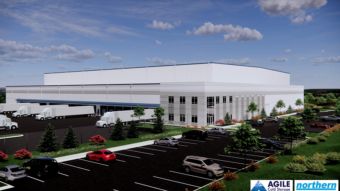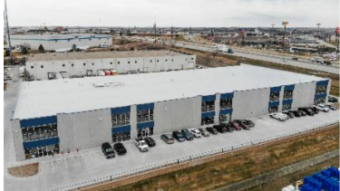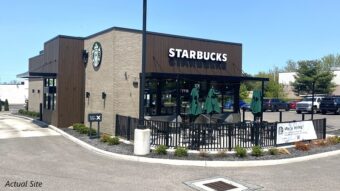Earlier this year, ESD moved into Chicago’s Willis Tower, a relocation conducted in part to attract and retain new talent to the 51-year-old engineering design firm. But walking through the space, it’s obvious that hiring young professionals isn’t the extent of the company’s future-proofing.
The new, 47,000-square-foot space occupies one full floor and part of a second in the iconic building. It’s also packed with technological advancements to not only make the workplace more inviting for ESD staff, but to serve as a living lab that they can draw upon when consulting with clients.
“We try to help our clients sort through what’s possible,” said Nathan Snydacker, executive vice president and chief of engineering at ESD. “With so much changing in the workplace—with new technologies that are available—it can be very overwhelming.”
When consulting with a client on a build-out, Snydacker said that there are three categories of concern: cost, environmental effect and the experiential impact. All are important, but ESD tries to focus on the experiential as that truly defines how the client will ultimately use the space.
For their own build-out, ESD turned to their employees, asking what they wanted to see in the office. The build-out team leaders took these suggestions into consideration while also including a suite of cutting edge technologies so that the new space can both more efficiently engage employees and serve as a showcase of possibilities for clients.
One technology was the installation of sensor-laden LED lights by Enlighted. Each sensing unit can detect ambient light, temperature, passive infrared as well as the energy that the light fixture itself consumes. Each sensor also includes Bluetooth beacon technology so that office operators can interact with the sensors and their data streams via a mobile or other Bluetooth-enable device.
The savings from the automatic lighting control capabilities alone pay for the intensive sensor array. But the data they provide about how the space is being used could in the end be even more valuable.
“ESD can use all the data that we collect to understand how this smart office is actually being used,” said Satprit Duggal, vice president of office vertical at Enlighted. “They can then design for certain spaces and see if the expected level of occupancy in that space is actually being used or not.”
The Chicago headquarters of ESD employs around 240 people. In the previous space, they had to share five conference rooms; the new office has 22 options that range in size from small huddle spaces to larger conference facilities. While these new collaboration opportunities were greatly needed, they also added a new management challenge.
So ESD turned to Teem, a conference room scheduling and analytics platform. Every meeting space has a display hardwired outside the entry that shows the availability as well as upcoming schedules. Employees can also access the platform from the desktops or mobile devices—an option that will soon roll out at ESD—to better plan meetings.
There are a number of features packed into the software, especially with Enlighted’s sensor network installed throughout the office. For example, the sensors detect if a scheduled space is vacant and the software can revert that space to available on the calendar, a term that Teem vice president of product marketing and workplace strategy, Ryan Anderson, refers to as “zombie hunting.”
“It’s a way that we purge the calendar from reoccurring meetings that are just living in the calendar where nobody shows up,” Anderson said. “Sometimes somebody will even leave an organization and they’ve booked reoccurring meetings that stay in the calendar.”
Robert Knight, senior associate in ESD’s intelligent building practice, has spearheaded the integration of the various technologies implemented in the new space. The zombie hunting capabilities in the Teem platform are a welcome strategy to more efficiently use space.
“Around here it’s pretty common where when we launch a new commercial construction project, the team will book a room for a weekly status meeting for a whole year,” Knight said. “After three months things kind of hit autopilot and no one shows up for the meeting.”
The new ESD office includes many other technologies as well. As it is a largely open and collaborative layout, a sound-masking system was installed to reduce distractions. This system is also integrated with the fire-alarm network for emergency enunciation should the need arise.
Workstations have sensors as well, so that an employee can walk up to a motorized, height-adjustable desk which will respond to personal preferences with one tap of the desk control. These workstation sensors also capture space-utilization data, data that can be inventoried for better space efficiency.
The new Willis Tower office serves many purposes for ESD. It attracts young talent with an iconic address and high-tech capabilities and it conveys to clients what is possible in their own spaces. But most importantly, it allows the decades-old firm to future-proof its own operations, and better position itself for the decades to come.



